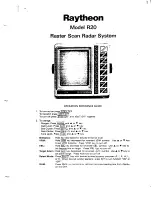
4 ENGLISH
ENGLISH
(Original instructions)
EXPLANATION OF
GENERAL VIEW (Fig. 1)
1. Handle/Built-in antenna(DAB/FM)
2. Battery compartment locker
3. Battery compartment cover (covering battery
cartridge)
4. Speaker
5. DC IN socket
6. Subwoofer
7. Power button
8. Band button
9. Advanced setting button
10. Info button
11. LED light
12. Preset 3/Play/Pause button
13. Preset 5 button
14. Preset 4/Next track/Fast-forward button
15. Volume/Tuning control/Select knob
16. EQ control button
17. AUX IN socket
18. USB power supply port
19. Auto tune button
20. EQ mode LED indicator
21. Preset 2/Previous track/Rewind button
22. Preset 1/Bluetooth pairing button
23. LCD display
24. Battery compartment
25. Micro USB port for software upgrade
SYMBOLS
The following show the symbols used for the equipment.
Be sure that you understand their meaning before use.
Read instruction manual.
Only for EU countries.
Due to the presence of hazardous
components in the equipment, waste
electrical and electronic equipment,
accumulators and batteries may have
a negative impact on the environment
and human health.
Do not dispose of electrical and
electronic appliances or batteries with
household waste!
In accordance with the European
Directive on waste electrical and
electronic equipment and on
accumulators and batteries and
waste accumulators and batteries,
as well as their adaptation to national
law, waste electrical equipment,
batteries and accumulators should be
stored separately and delivered to a
separate collection point for municipal
waste, operating in accordance with
the regulations on environmental
protection.
This is indicated by the symbol of the
crossed-out wheeled bin placed on the
equipment.
IMPORTANT SAFETY
INSTRUCTIONS
WARNING:
When using electric tools, basic safety precautions
should always be followed to reduce the risk of fire,
electric shock, and personal injury, including the
following:
1. Read this instruction manual and the charger
instruction manual carefully before use.
2. Clean only with dry cloth.
3. Do not install near any heat sources such as
radiators, heat registers, stoves, or other apparatus
(including amplifiers) that produce heat.
4.
Only use attachments/accessories specified by the
manufacturer.
5. Unplug this apparatus during lighting storms or
when unused for long periods of time.
6. A battery operated radio with integral batteries or a
separate battery pack must be recharged only with
the specified charger for the battery. A charger that
may be suitable for one type of battery may create a
risk of fire when used with another battery.
7.
Use battery operated radio only with specifically
designated battery packs. Use of any other batteries
may create a risk of fire.
8. When battery pack is not in use, keep it away from
other metal objects like: paper clips, coins, keys,
nails, screws, or other small metal objects that can
make a connection from one terminal to another.
Shorting the battery terminals together may cause
sparks, burns, or a fire.
9. Avoid body contact with grounded surfaces such
as pipes, radiators, ranges and refrigerators. There
is an increased risk of electric shock if your body is
grounded.
10. Under abusive conditions, liquid may be ejected
from the battery; avoid contact. If contact
accidentally occurs, flush with water. If liquid
contacts eyes, additionally seek medical help.
Liquid ejected from the battery may cause irritation
or burns.
11. Do not use a battery pack or tool that is damaged
or modified. Damaged or modified batteries may





































